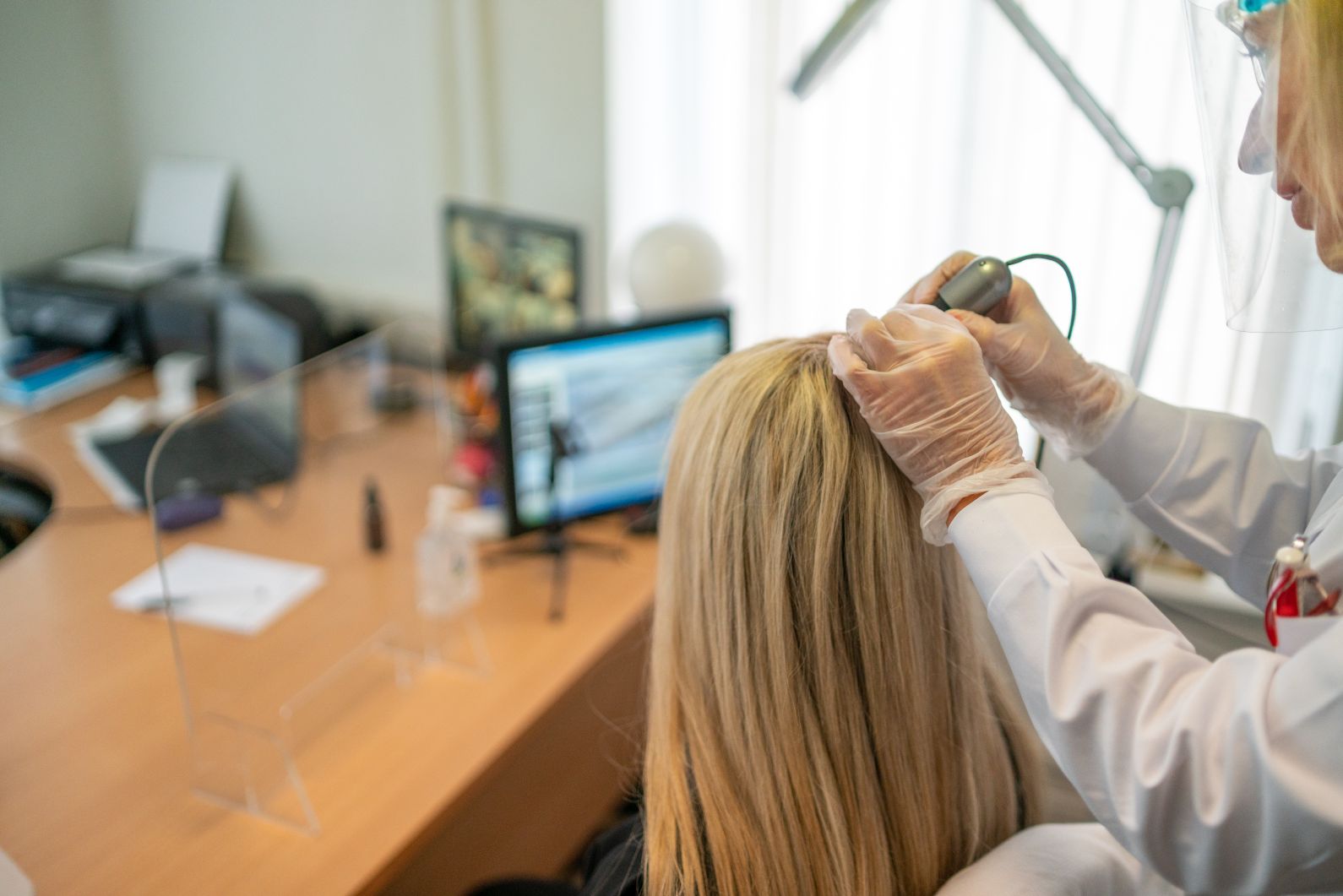Alopecia or hair loss has different types. Some of them go away on their own just like traction alopecia and telogen effluvium. There are also those which are not curable such as female pattern baldness and alopecia areata.
Determining whether your alopecia is temporary or permanent requires the expertise of a dermatologist or a trichologist. These hair and scalp specialists possess the knowledge, skills, experience and equipment needed to come up with an accurate diagnosis of your condition. Following the diagnosis, these experts can create a treatment plan to address your hair loss problem.
Many think that just because their alopecia is temporary that medical intervention is no longer necessary. Do not fall for this notion! Even if you are suffering from a reversible hair condition, seeing a dermatologist is imperative not just to determine the type of alopecia you have but also to ensure that the problem does not become severe like in the case of traction alopecia.
Typically caused by repeatedly tying the hair too tight, traction alopecia is one of the types of hair loss conditions that is reversible. Simply wearing your hair down and avoiding hairstyles that pull on your tresses can solve the problem. Making these changes eventually leads to hair growth in the affected area. Often, improvements are observed six months after the cause has been eliminated.
Treatment is usually not necessary to reverse traction alopecia. There are cases, however, wherein the damage is too severe that medical intervention is necessary. For example, the scalp may become swollen or develop open sores, requiring the use of medications. Furthermore, the hair loss may already be so extensive that it warrants a treatment plan that promotes hair growth. Early medical intervention is also highly recommended for traction alopecia cases since failure to address this condition early can result in permanent hair loss.
Meanwhile, if you have a non-reversible type of alopecia like female pattern baldness, do not throw in the towel and leave your problem up to fate. While you cannot do anything to completely stop the hair loss, you can prevent it from progressing rapidly. A dermatologist or trichologist can create a treatment plan which can slow down the thinning of your hair.
Similarly, if you have a chronic hair loss condition like alopecia areata, working with a hair and scalp specialist is essential not just to regain lost hair but also to help you manage your symptoms. In alopecia areata, it is not unusual for hair to grow again after a year even without treatment. However, for this type of hair loss problem, recurrence is very common. This means that bald spots may develop over and over again. Suffice to say, alopecia areata is an unpredictable and difficult hair loss condition. You’d definitely benefit from regularly working with a hair and scalp specialist to make things bearable and manageable.
Alopecia, be it the temporary or permanent type, is very troubling for most people, men and women alike. If you are noticing that your hair is thinning or your hair line is receding, please do not delay seeing a dermatologist or a trichologist. Remember, the prognosis for temporary and permanent hair loss conditions is better when the problem is caught early.
Is your alopecia or hair loss temporary or permanent? Our experienced hair and scalp specialist can diagnose your condition and create an effective treatment plan. Call us at (0)1 6793618 and schedule an appoint with our specialist.
—
Image by Khusen Rustamov from Pixabay



